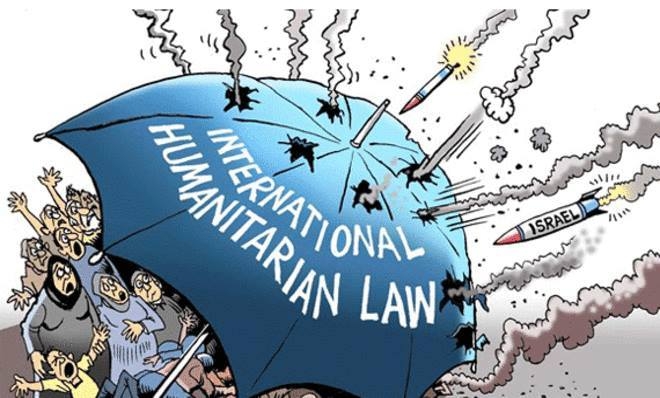Analyzing Organizational Behavior
Understanding individual behavior is challenging. This makes analyzing organizational behavior complicated because large organizations have many people working individually and collectively to achieve organizational goals. Organizations are naturally complex to analyze because they comprise of different individuals and groups. Models provide the best solution to analyzing organizations. They are roadmaps to organizational behavior with regard to identifying critical factors and their relationships. It is why this research paper will utilize Nadler and Tushman’s Model to analyze an organization. This research paper contains an analysis of Walmart using Nadler and Tushman’s congruence model to identify key components, desired outputs, and issues that need addressing in the organization’s strategy.
Walmart is the largest retail store in the world operating over 11,000 retail units and employing over 2.2 million associates (Walmart, 2014). Its large nature makes it complex to manage. This is because the management has to understand the behavioral patterns of millions of people and multiple groups, including relationships that exist among them. Walmart is among the leading global companies generating high revenues consistently over the years as evident from their second and first ranking in the Fortune Global 500 list in 2012 and 2014 respectively (Walmart, 2014). The organization has achieved remarkable success in the last decade largely due to successful implementation of organizational strategy. Walmart’s success generally results from the management understanding the complex organizational behavior patterns and implementing strategies to control critical components of the organization according to Nadler and Tushman’s model. Below is a detailed analysis of Walmart’s strategy based on key components of environment, strategy, tasks, formal system, and key individuals (Walmart).
Nadler and Tushman’s Congruence Model
Analyzing Walmart using Nadler and Tushman’s Congruence Model requires categorizing organizational strategy into inputs, transformation process, and outputs. The model describes interdependence as the most critical property of organizational functioning and the same case applies to Walmart. The founder, Sam Walton, laid the foundation of Walmart based on the congruence of critical inputs, transformation processes, and major outputs when he opened the first Walmart store in 1962 (Walmart, 2014). He managed to balance the three critical components enabling his store to perform within its potential. The effectiveness of the Congruence Model of organizational behavior was evident five years after Walton opened the first Walmart store, because the business had expanded to twenty-four stores. This eventually led to official incorporation of the current Walmart Stores, Inc in 1969. Understanding Walmart’s success based on Nadler and Tushman’s Model requires further breakdown of the inputs, transformation process, and outputs as provided below.
One of the key inputs Walmart deals with on a daily basis is the environment. The retail industry is unforgiving with regard to demands by the environment and possible constraints on organizational functioning. Walmart and other retail organizations must contend with an ever-changing environment where the market demand for goods and services is high. They also face the challenge of balancing quantity and quality, which directly affects organizational functioning. Nadler and Tushman’s Congruency Model identifies environment as the first key input and consider it key to organizational functioning. Based on the Congruency Model, the key components of environment in the case of Walmart include their customers, suppliers, investors, government, and regulatory bodies, competitors, community, and global responsibilities among other groups (David Nadler and Michael Tushman).

The market is the most important key component of Walmart’s environment because their primary goal is to provide goods and services to clients in their retail stores. The entire company revolves around the customer as evident from Sam Walton’s mission to save people money so they can live better (Walmart, 2014). Suppliers are another key component of Walmart’s environment for they enable the organization to serve their customers. Walmart has thousands of suppliers globally who they enlist through application based on fulfillment of requirement standards. Walmart needs many suppliers because of the global demand for their products in local and global retail stores. Inevitably, they also put constraints on Walmart’s organizational action (Walmart).
Competition is another category of key environment components Walmart deals with. The organization may be large but it still faces stiff competition from other retail companies, such as Argos. Competition is normal especially in the highly competitive retail industry and it directly affects Walmart’s organizational action and marketing strategies. Increased competition over the years is also responsible for decisions and norms implemented by Walmart to gain competitive advantage over rivals. Investors are an equally important key environmental component considering they provide the necessary resources for Walmart. Resources are a key input in Nadler and Tushman’s Congruency Model thus making investors integral to Walmart’s organizational action. Satisfying investors is equally as important as satisfying customers. They affect Walmart directly through financial input, thus satisfy the critical feature for analysis in the Congruency Model (David Nadler and Michael Tushman).
Government and regulatory bodies are important environment components that put constraints on Walmart’s organizational action. This comes from the nature of the retail industry where safety and quality of products sold in retail stores is critical. Walmart is also a global company operating in 27 countries. This means the company has to deal with different government policies and regulations, which complicates managing organization behavior. It also operates in a modern world where organizations must fulfill their global responsibilities with regard to environmental protection and preservation. Such issues place a greater demand on Walmart and put constraints on their actions.
Generally, the inputs discussed in this paper exist outside Walmart but affect it directly. They are critical features for analyzing the organization and determining the demands and constraints environment has on Walmart. They also influence the strategy Walmart adopts and implements to overcome its constraints. Strategy is an input but it is different from others for it acts as a transition to the transformative process. The Nadler and Tushman’s Model considers strategy the most important component in organizations for it determines organizational output. Analysis of Walmart shows it has adopted key strategies to deal with key environmental components it faces as follows (David Nadler and Michael Tushman).
The first strategy in the Nadler and Tushman’s Model is defining the core mission of the organization. Walmart’s core mission is to save people money and improve their lives as is defined in their mission statement “We save people money so they can live better” (Walmart, 2014). It is the same mission Sam Walton had when opening the first Walmart store in 1962 and is still their mission up to the present day. This strategy ensures the organization reaches and positively influences a greater market than their competition. Walmart aims to achieve it through innovative thinking and leading through service to ensure they achieve their outputs (Walmart).
Walmart employs the vision of strategic globalization to enable their customers save money and enhance their lives worldwide. Competing at a global level is also a smart business strategy in terms of overcoming the constraints of competition and enhancing business growth. The company aims to become the largest global retailer by focusing on strategies and actions that increase future business success. Supporting strategies it adopts in a bid to achieve their mission include additional global expansion to access a wider market and promoting ownership of ethical culture among stakeholders through diversification programs. Walmart employs its strategies based on three core values of respect for individuals, striving for excellence and serving one’s customers (Walmart).
Generally, Walmart’s strategies focus on continuous learning and improvement as evident in their core statement “High Expectations Are Key To Everything” (H.E.A.T.K.T.E.) (Walmart, 2014). Nadler and Tushma’s Congruency Model defines strategies as determinants of tasks and the same applies to Walmart. Tasks are part of the transformation process. Walmart gears theirs towards helping customers, employees and stakeholders make right decisions in a bid to improve the reputation of the organization and ultimately gain a competitive edge in the global market (Walmart).
One of the tasks at Walmart is implementing a servant leadership policy that requires managers to be part of the team. The organization also gives its employees access to leadership at every management level, which ensures effective communication within the organization. Walmart employs employee-customer policies. They include the sundown rule of answering customer and employee queries within 24 hours and the 10-feet rule that requires employees to greet customers within ten feet of them (Walmart, 2014). Walmart is keen on interdependence and creating synergy among employees as evident in their servant leadership policy. Continuousness and reward are also crucial factors in the task component of the Congruency Model as reflected in Walmart, where employees are associates in profit sharing. Tasks at Walmart are collective and individual- based to ensure successful implementation of organizational strategies mostly through informal organization, such as their unwritten rule culture.
Any transformation process requires a formal system and individuals to perform tasks (Nadler and Tushman, 41). Walmart is no exception as it has a formal leadership structure with key individuals holding key positions. The Board of Directors is the top Leadership body at Walmart with Rob Walton playing the chairperson role (Walmart, 2014). The company has a hierarchical leadership structure starting with the president (Mike Duke) all the way to store managers at the bottom. Rob Walton adopts a servitude style of leadership that involves making decisions based on input and feedback of customers as opposed to employees or stakeholders. This leadership style creates a work environment oriented towards servitude as leaders lead by example. Such leadership transformed Walmart from a large retailer to a global business force (Davide Ravasi and Majken Schultz).
The transformation process at Walmart aims at achieving their desired output of saving their customers money and enable them live better lives. This output has mutual benefits for customers and Walmart in terms of getting value for their money, while simultaneously building Walmart’s reputation as a global force. The output at the organizational level is global expansion by reaching a wider market to guarantee sustainability. Walmart aims to achieve this goal despite the constraints of environment and other input factors, such as resources and unpredictability of the global economy. The desired output at group level is receiving quality service at cheaper cost for customers, discovering and enhancing work skills for employees, and sharing profits through return on investment for investors and stakeholders globally (Walmart).
Walmarts achieves its desired outputs judging by current and past statistics. It is the top ranked retail company globally. This is evidence of the organization achieving its desired output of global dominance over competitors. Walmart is also achieving desired outcomes at group level considering it made approximately $473 billion in sales in 2014 (Walmart, 2014). This means that management, stakeholders, employees and other groups within the organization achieved their goal of successfully implementing organizational strategies. Walmart also achieves individual level outputs with regard to employee satisfaction through promotions and bonuses. Organizational growth also means that investors gain leverage and returns while higher sales make resource utilization more efficient. Overall, Walmart has achieved and surpassed its desired outcomes (Walmart).
Nadler and Tushman’s Congruency Model describes strategy as the response to organizational inputs and constraints. The analysis of Walmart shows its strategy is in line with their environmental inputs. This is because the transformation process aligns with Walmart’s strategy of positively influencing a greater market than their competition by providing easy access to affordable goods and services. The transformation process also aligns well with the globalization strategy and striving for excellence in serving customers. For instance, the key tasks at Walmart focus on synergy, and implementing and promoting an ethical culture in the organization. Embracing culture and diversity is one of the major forces behind growth of the informal organization at Walmart. Team synergy grows because managers and employees at Walmart interact and strive for excellence in continuous improvement and learning. The interaction between key tasks and informal organization thus helps in producing desired output (Davide Ravasi and Majken Schultz).
The formal organization, chaired by Rob Walton, is largely responsible for the interaction between transformation processes. Rob transformed Walmart from a regional retailer to a global organization through his servitude leadership style. He combines this style with a visionary leadership style, initially adopted by his late father Sam Walton. The interaction between Rob’s servitude and visionary style aligns Walmart’s strategy with its transformative process perfectly and vice versa. Rob uses his visionary style to manage resources effectively by cutting labor and supply costs. He then uses the informal organization of shared responsibilities to implement organizational strategy efficiently by involving employees in decision-making. The interactions between the transformation processes at Walmart thus originate from its formal leadership. This is because it enforces the key tasks of service to customers, respect for individuals and striving for excellence that nurtured the existing informal organization responsible for producing outputs (Davide Ravasi and Majken Schultz).
Evaluating the outputs at organizational, group and individual levels reveals there might be issues that Walmart needs to address. The main concern regards individual outputs considering employees contribute the largest yet organization and group outputs are higher. This is normally the case in most organizations where the organizations and stakeholders benefit the most while employees receive meager or no share of profits in some cases. Walmart promises outputs for individuals, such as job satisfaction, favorable working conditions, and profit shares yet there are many complaints from disgruntled employees. The legitimacy of many individual complaints is difficult to verify but Walmart should address multiple complaints of understaffing and poor working conditions in some stores. The fact that Walmart employs over 2.2 million associates globally is a possible source of issues regarding employee satisfaction and rewarding mechanism. Walmart has a solid organizational framework. This is why it should address emerging issues on individual outputs to ensure collective growth and development at organizational, group and individual level.
There is overwhelming information on how Walmart works but there is little data on how it deals with competitors. It would be important for this analysis to learn the relationships between Walmart and other competitors in the market but unfortunately, no available resources provide credible information for this analysis. It requires one to get the information from Walmart, which is logistically improbable. However, critical information for this analysis was available from various electronic resources and was utilized in the research.
Overall, analyzing Walmart using Nadler and Tushman’s Congruence Model shows its former and current leaders adopted effective strategy to configure existing resources to overcome the constraints of key environment components. A combination of effective leadership and informal organization culture based on servitude and continuous improvement turned a regional company into the biggest global retail company. Walmart’s success results from Sam and Rob Walton, understanding key components of the environment and aligning them with visionary strategy. The interaction of their leadership styles, specific tasks, and a revolutionary informal organization that ultimately led Walmart to achieve it outputs at organizational, group and individual level, thus giving rise to the empire it is now.
References
David,Nadler and Michael, Tushman. Frameworks for Organizational Behavior. A model for diagnosing organizational behavior: Applying congruence perspective. Managing Organizations: Readings and Cases, pp. 3-48.
Davide, Ravasi and Majken, Schultz. Responding to Organizational Identity Threats: Exploring the Role of Organizational Culture, Academy of Management Journal, Vol 49 (3), pp. 433-458.




